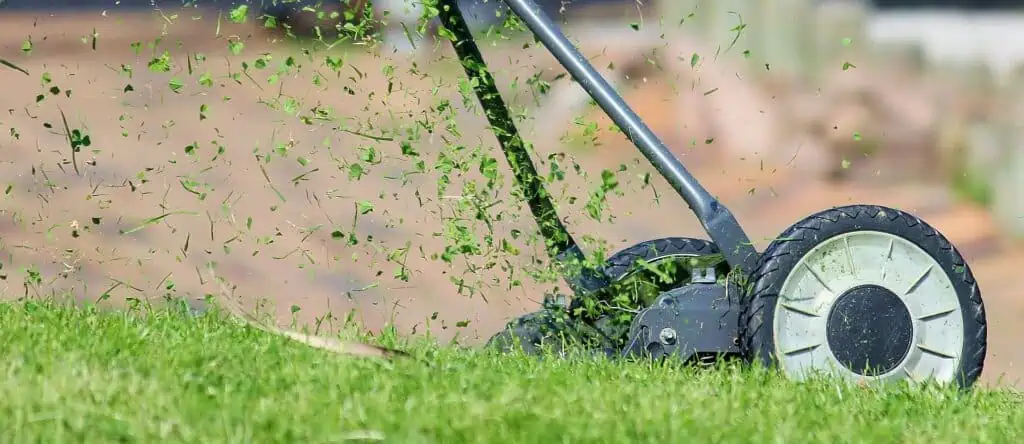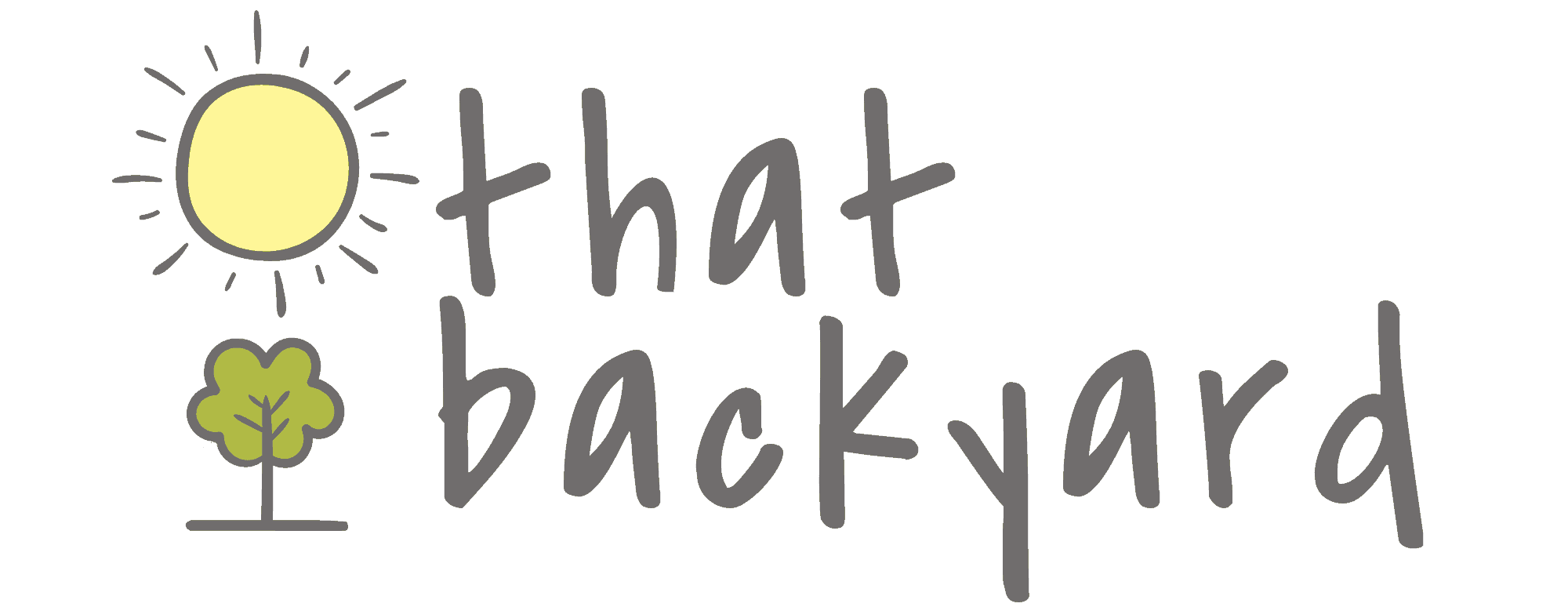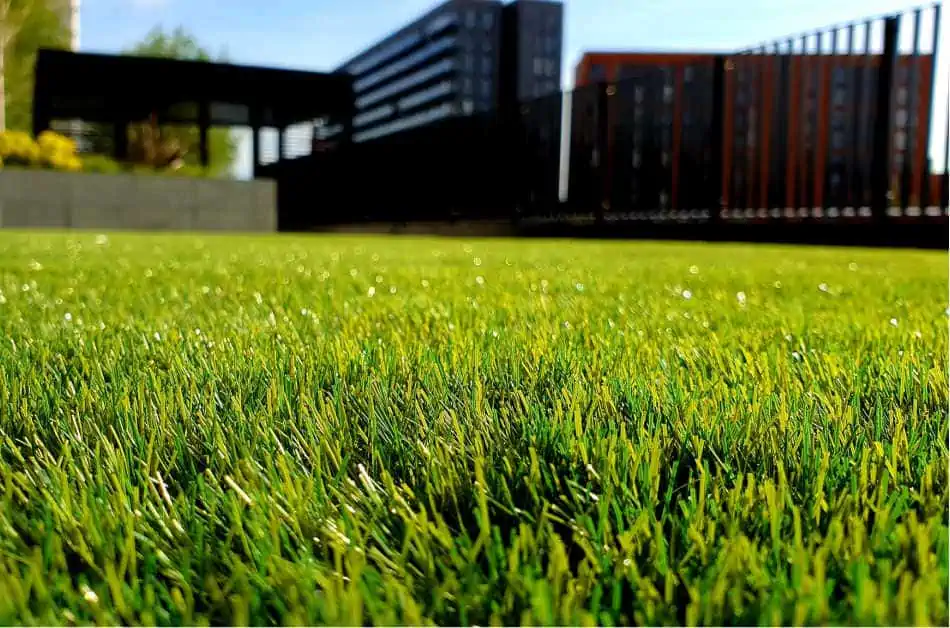As an Amazon Associate I earn from qualifying purchases.
Did you know that grass clippings make up nearly 20% of the solid waste that collected in communities? And that’s a year round average, not just the summer months. In fact, during summer months the grass clippings of some communities can make up a staggering 50% of collected waste! Now, grass is obviously far more environmentally friendly than plastics (12.8% of garbage) glass (4.5%) or metals (9.1) but it still means that millions and millions of pounds of something that could easily be composted and add to the environment end up in a landfill.
In fact, by 2017 numbers (dated, I know) 37 million tons of yard waste was disposed of by Solid Waste Management. And in case you need some zeros to help visualize it, that’s 74,000,000,000 pounds or the weight of 82 million lawnmowers.
Now that waste will, of course, break down. But knowing how to compost grass clippings will do far more that just decrease the volume of solid waste. Just tossing it is a huge missed opportunity!
4 Ways to Handle Your Grass Clippings
1. Add the to your tumbler or compost heap
If you want to start composting your grass clipping, the most effective way to handle them is to have a compost pile that is dedicated to grass clippings and other lawn trimmings. If you compost regularly this is a simple matter of adding grass to your pile.
How to Compost Grass Clippings in a Traditional Compost Pile:
- Gather dried grass that has not been treated with chemicals for at least 14 days
- Add the grass (a nitrogen-rich material) into the pile with a similar amount of brown (carbon-rich) materials. This ratio will keep your pile from heating up or becoming smelly
- Mix the grass throughout your pile so the grass doesn’t mat
- Wait for Mother Nature to provide you with beautiful compost!
So, if you have an active pile, just treat your grass clippings like regular green material and you’ll be fine. Unless you’re not. While composting grass clippings isn’t rocket science, there are a few things you need to be aware of if you’re going to succeed:
- Grass has a tendency to “mat” in your pile if you simply dump it on top. It will weave itself together into a thick layer that will hold in the heat, kill your microorganisms, and turn your pile into a slimy stinky mess. To avoid this, be sure to mix your grass into the pile so it’s well distributed.
- Freshly cut grass adds a huge amount of moisture into your pile. In fact, freshly cut grass it up to 80% water by weight. Waiting a few days for the grass to dry out before you gather/add it can reduce this moisture load and reduce the volume of browns you need to add to balance it out.
- “Organic” grass can be a great addition to your pile but grasses my harbor herbicides, pesticides, or toxins. Any sprays that you use at home will likely break down in your pile within a matter of days. You should avoid getting clipping from commercial areas to compost as they may have more aggressive or long-lasting toxic chemicals on them. Personally, I only add grass to my compost pile if it has not been sprayed within 14 days.
- The “greens” in your compost pile are primarily responsible for the heat that is generated in your pile. Dry leaves or cardboard are awesome materials that come in abundance that you can use to counteract the grass you add.
I don’t have a large lawn but I still produce more grass than I want to add to my pile. If you’re in the same boat, don’t worry. There is an entire boatload of other things that we can do with grass clipping beyond composting them.
But is it necessary to add clippings to your pile?
If you have a ton of brown material in your pile and need to balance it out, knowing how to compost grass clippings can be invaluable. However, composting is only one way to utilize grass around your house, and, surprisingly, it might not even be the best way! Let’s see what other options we have:
2. Grasscycling: Compost Grass Clipping In-Place

The easiest way of composting grass clipping is to simply leave them on the lawn when you mow. This process is known as grasscycling. Mother Nature has been composting material left on the ground for millions and millions of years. So, if you don’t care to actively compost your clippings, leave the bag off your mower. Cut grass that is left on your lawn with disappears within a matter of weeks as it works its way down.
Not only is this the lowest effort method of recycling grass clippings, but it also comes with most of the benefits of traditional composting such as water retention and adding nutrients to the soil.
A combination of grasscycling and composting can be extremely effective if you have a small pile or a large lawn. If you have too many clippings to handle, just gather up the clippings on every other mowing to compost and leave the rest to decompose on your lawn.
3. In-Ground Composting
If you have a large space and more clippings that you know what to do with, you might consider just tilling them straight into your soil! Of all composting methods, this is probably one of the easiest.
Tilling in the grass to your garden will expedite the decomposition process which means that your garden can consume a load of grass in a matter of a week or two.
If you’re going to be tilling grass into your garden the fresher you can get it in the better. Having a high water content with help the grass to break down faster.
4. Use Them As Mulch
One of my favorite ways to use grass is as a ground covering. While it may not be super attractive, grass can be used highly effectively as a ground cover to help your ground stay moist, to keep weeds at bay, and keep veggies warm.
Instead of composting our fall grass clippings, my family would save them, dry them, and spread them over our carrots and onions in the garden. This insulation typically kept them from freezing well into winter and allowed us to keep harvesting frem veggies for much longer.
You can also do well by spreading a layer of grass anywhere you don’t want weeds to grow, to keep seedlings warm as they sprout, and many other things!
The main thing to remember here is that, when wet, a thick pile or layer of grass will mold and start decomposing in a gross way. If you still plan to just use your lawn remnants as mulch even now that you know how to compost them, be sure to spread the grass over the area in thin layers and give it some time to dry before adding more.
If you have too many grass clippings to compost:
If you still have grass clippings without a job after employing those four methods…you probably have too much lawn or too little garden. Just replace half of your lawn with garden and your problem with be solved!
But really, there are many things you can do beyong composting lawn clippings that are more beneficial to the environment. So if you have more than you can handle, check out some of the following options:
- Post on Facebook or craigslist that you have grass free for the taking. Many people would like grass to add to their compost piles but either has no lawn or too small of a lawn. In fact, some people I know have been lucky enough that they’ve found people will actually mow their lawns in exchange for keeping the clippings.
- There are many community projects that will take your scraps and clippings for compost projects. Sometimes they will even just compost your grass clippings and return compost to you! Just be sure you check what they take before joining as some will not take any sort of lawn clippings.
- Throw them away. At the end of the day, throwing away some yard waste is not the end of the world. It will break down quickly and, if you really want to feel better, having organic waste in a landfill can even help other things break down faster. So while your clippings probably aren’t going to save the world, using them intentionally can make a difference!
3 Benefits of Composting Your Grass Clippings:
- It continues the circle of life. Keeping your grass clipping on your land and reincorporating them in the life cycle of existing grass and plants means that you will need to fertilize less. Nutrients like phosphorus, calcium, and nitrogen are depleted from the soil and incorporated into a grass’s structure. When you cut off part of the grass and throw it away you are literally sucking those nutrients out of the ground and sending them to the trash. Which is why we fertilize. The natural cycle is for a plant to die and fall on the ground where it grew, returning the nutrients to the soil. Composting expedites and improves this process.
- Improved water retention. Healthy soil retains water. Adding in composted grass to your lawn/garden means that you’ll have to water less frequently.
- A more balanced compost pile. It’s extremely easy to build up a stock of carbon-rich items to add to your compost pile. Cardboard, leaves, sawdust, woodchips, etc. are plentiful. However, there are extremely slow to decompose unless you balance them well. Grass clippings are a wet nitrogen source that can heat up your compost pile and boost its production.
So if you’re not into “composting” your grass clipping per se but still want to use them in some way, choose one of the low-effort methods and you’ll still get great results!
Conclusion
When it comes down to it, working well without our plant involves gaining correct information and utilizing our resources intentionally. Now that you know how to compost grass clippings you will be better equipment to make a difference, no matter how you decided to use yours!
Other Blog Posts You’ll Love
Can You Compost Oats? (A Guide to Oatmeal and Oat Products)
At A GlanceYes, you can compost oats and oatmeal as they are organic materials that…
Can You Compost Oil? (Yes, but only a little…)
At A GlanceIt’s not recommended to compost oil as it can cause several issues in…
Composting Nectarine Pits – What You Need to Know
At A GlanceComposting nectarine pits can be a bit challenging due to their hard and…
Composting Newspaper with Color Ink – What You Need to Know
At A GlanceYes, you can compost newspaper with color ink, but it’s preferable if the…
Can You Compost Noodles? A Starchy Foods Composting Guide
At A GlanceYes, you can compost noodles as they are a biodegradable organic matter. Whether…
Can You Compost Nut Shells? (Yes…but probably don’t…)
At A GlanceYes, you can compost nut shells, but there are certain considerations to be…

